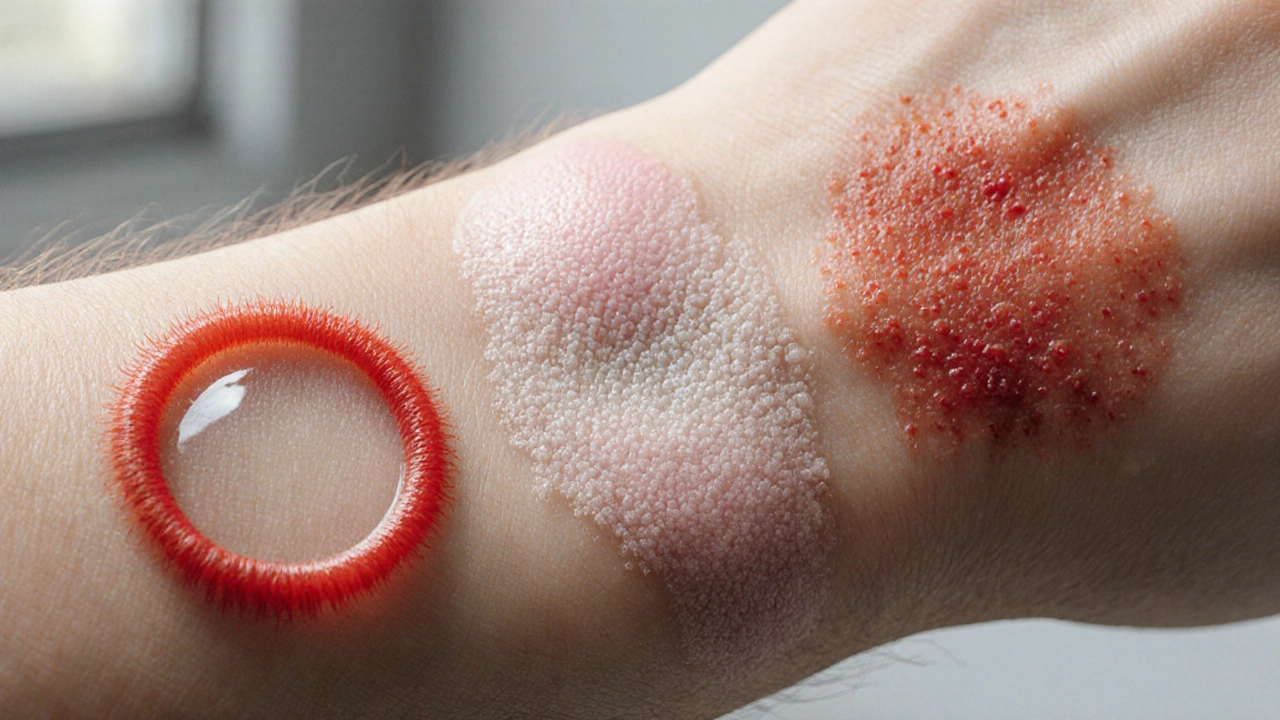Skin Fungus: What It Is, How It Shows Up, and Simple Ways to Treat It
Skin fungus is any infection caused by a tiny organism that loves warm, damp places. It’s not a scary disease, but it can be itchy, embarrassing, and hard to shake off if you don’t treat it right.
Common Types and What They Look Like
The most frequent culprits are athlete’s foot, ringworm, and jock itch. Athlete’s foot shows up on the toes or soles as red, flaky patches that may crack. Ringworm forms a round, red ring with a clearer center—hence the name. Jock itch appears in the groin area and feels sore and itchy.
All these infections share a few warning signs: itching, burning, scaling, and sometimes a slight smell. If you see a rash that won’t clear up after a few days of regular soap, think fungus.
How to Treat and Prevent Skin Fungus at Home
First‑line treatment is usually an over‑the‑counter antifungal cream, spray, or powder. Look for active ingredients like clotrimazole, terbinafine, or miconazole. Apply it exactly as the label says—usually twice a day for two weeks, even if the rash looks better after a few days.
Keep the affected area clean and dry. After showering, pat the skin dry instead of rubbing, and let shoes air out. If you’re dealing with athlete’s foot, change socks daily and wear breathable shoes.
Natural options can help too. Tea tree oil has mild antifungal properties; dilute a few drops with a carrier oil and apply to the spot. Yogurt with live cultures can soothe irritated skin, but it won’t replace a proper antifungal.
If the rash spreads, gets painful, or you have a weakened immune system, it’s time to see a doctor. Prescription meds like oral terbinafine or fluconazole work for stubborn cases, and a professional can rule out other skin issues.
Prevention is simple: avoid sharing towels, wear flip‑flops in public showers, and wash hands after touching any infected skin. Regularly clean gym equipment and keep your home flooring dry.
Bottom line: skin fungus is common, treatable, and usually not a big deal if you act fast. Spot the symptoms, use an OTC antifungal, keep the area dry, and you’ll be back to clear skin in no time.

Fungal Skin Discoloration: Signs You Need a Dermatologist
Learn how to recognize fungal skin discoloration, when a dermatologist is needed, and effective self‑care tips to stop the infection.